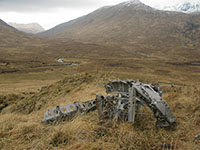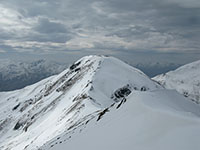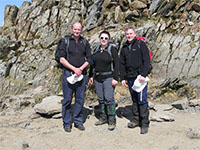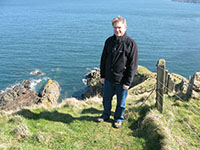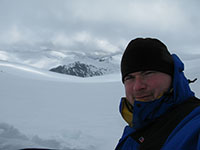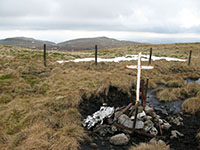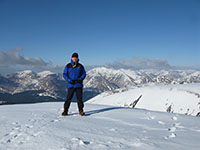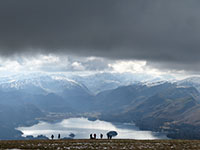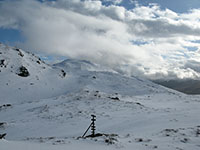On Sunday last weekend I walked to Glen Affric from Glen Shiel (see my blog post ‘Glen Shiel’) . About 9km from Glen Shiel, not far from the Alltbeithe hostel, on the north-western slopes of the Munro summit of Mullach Fraoch-choire lies the site of an RAF Wellington bomber that crashed in the Glen in 1942. The location of the site is in a particularly magnificent setting, surrounded by the bleak moorland of upper Glen Affric and steep-sided mountains. Wreckage sites from crashed Wellingtons are suprisingly widespread throughout the Scottish mountains, this is the 6th I’ve visited.
I spent Saturday and Sunday last weekend in Glen Shiel, staying on the Saturday night at the Cluanie Inn, which I think is one of the best places to stay in Scotland for hillwalking – it sits right in the middle of an enormous area stuffed full of fantastic mountains and remote landscapes. Late April and early May is a good time to stay, as it is quiet, the weather is often good and there are no midges about.
Last week I travelled to Wales for a short hillwalking holiday in Snowdonia. On Friday I walked up Snowdon, the highest mountain in Wales at a height of 1085m (and the highest mountain in the British Isles outside Scotland) with a couple of friends, Kate and Martin.
On Sunday Lesley and I travelled to Siccar Point, on the coast to the east of Edinburgh, not far from the border with England in the Scottish Borders region.
On Saturday last weekend I undertook the NNAS Gold Award assessment, with C-N-Do (I had done the Gold award training with them back in November). This involved some classroom tests of walking route preparation and map reading, but the majority of the day was spent navigating along a route in the Ochil hills (coincidentally in the same area as the walk I did to Blairdenon Hill three weeks ago).
Last weekend I travelled to the Cairngorms, and walked from the busy Coire Cas ski centre up to the Cairn Gorm – Ben Macdui plateau. A lot of the winter snow had gone from below about 700m altitude, but above that height the snow cover was complete and on the plateau itself there were full winter conditions with deep snow.
Last Sunday I went for a short walk in the western Ochil Hills at Sheriffmuir (nor far from where I went to school). This area of the Ochils has historical associations with William Wallace and also the Jacobite uprising of 1715. Near the start of the walk was an interesting ancient alignment of stones, that seem to point towards the escarpment of the Touch Hills on the horizon, and one of the stones is called the Wallace Stone after William Wallace.
On Wednesday I travelled to Glen Etive and climbed to the 997m summit of Glas Bheinn Mhor.
Conditions were absolutely perfect on the walk, with little wind and clear skies. The route up to the summit ridge from Glen Etive is a fairly punishing climb from sea level along the Allt Mheuran into Coire Odhar. There was substantial snow cover above about 700m, but only one small section that was steep and required a bit of attention and the use of ice-axe and crampons, although no real difficulties. The views from the summit were out of this world and it was a perfect day for taking photographs.
Last weekend I travelled to the Lake District in England and walked up to the 931m summit of Skiddaw.
This was the first time I’d been hillwaking in the Lake District, so I thought I’d do a straightforward walk, and indeed the summit of Skiddaw, despite being one of the highest in the area, is not difficult to reach, with a clear and well-surfaced path almost all the way up. Above about 600m there was significant snow-cover although crampons and ice-axe were never required. Above about 700m thick cloud meant no views and some navigation with a compass to find the right way, but it was never difficult.
Last week I went walking in the Balquhidder area of the southern Highlands. I walked up Kirkton Glen through fir plantations and to the col at the head of the glen where there is an impressively large rock called Rob Roy’s Putting Stone below the crags of Leum an Eireannaich. From there I walked along the tops of Meall an Fhiodhain, Cam Chreag and Meall an t-Seallaidh, which form a high ridge about 4km long that nowhere goes below 700m in altitude, but also never goes above 900m, so there are no Munro summits on it. This means that it is not a well-visited area of the Highlands, but it still offers a proper mountain hike.
